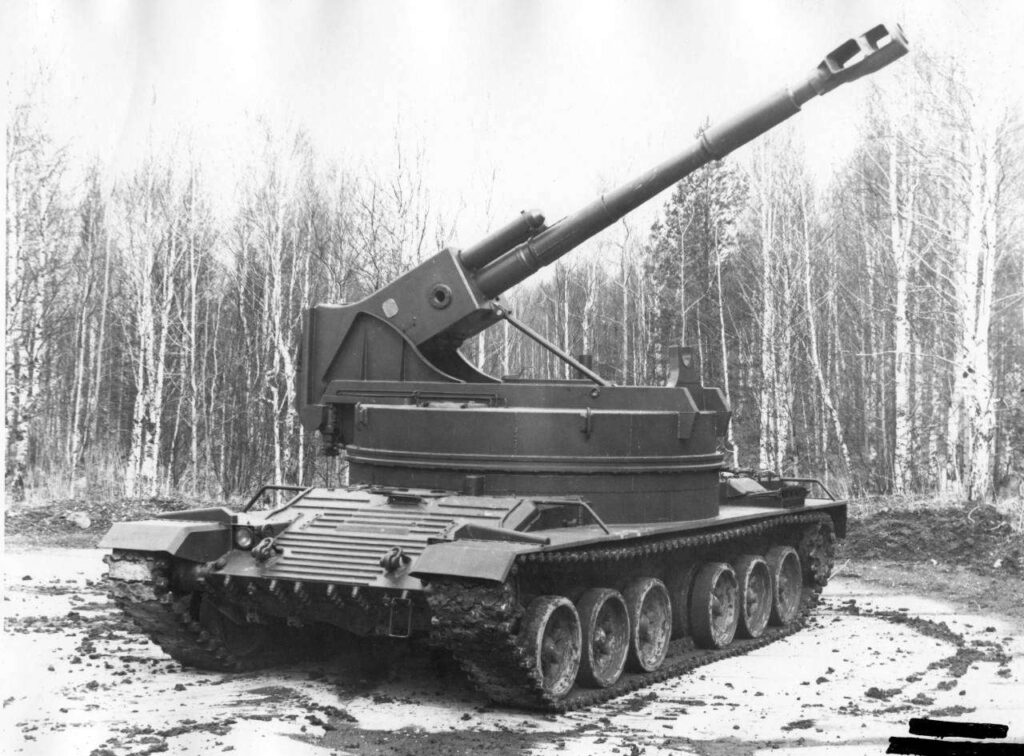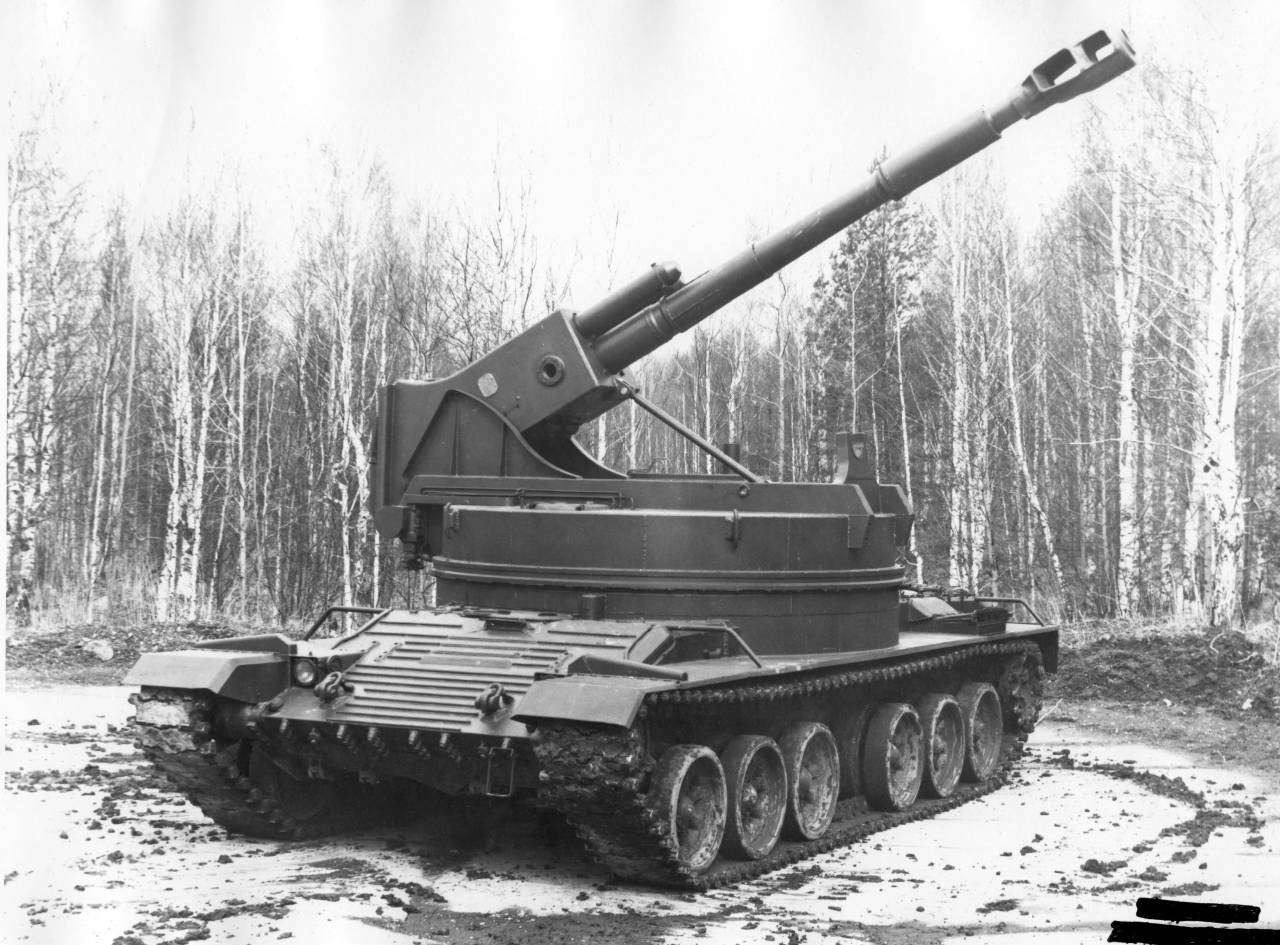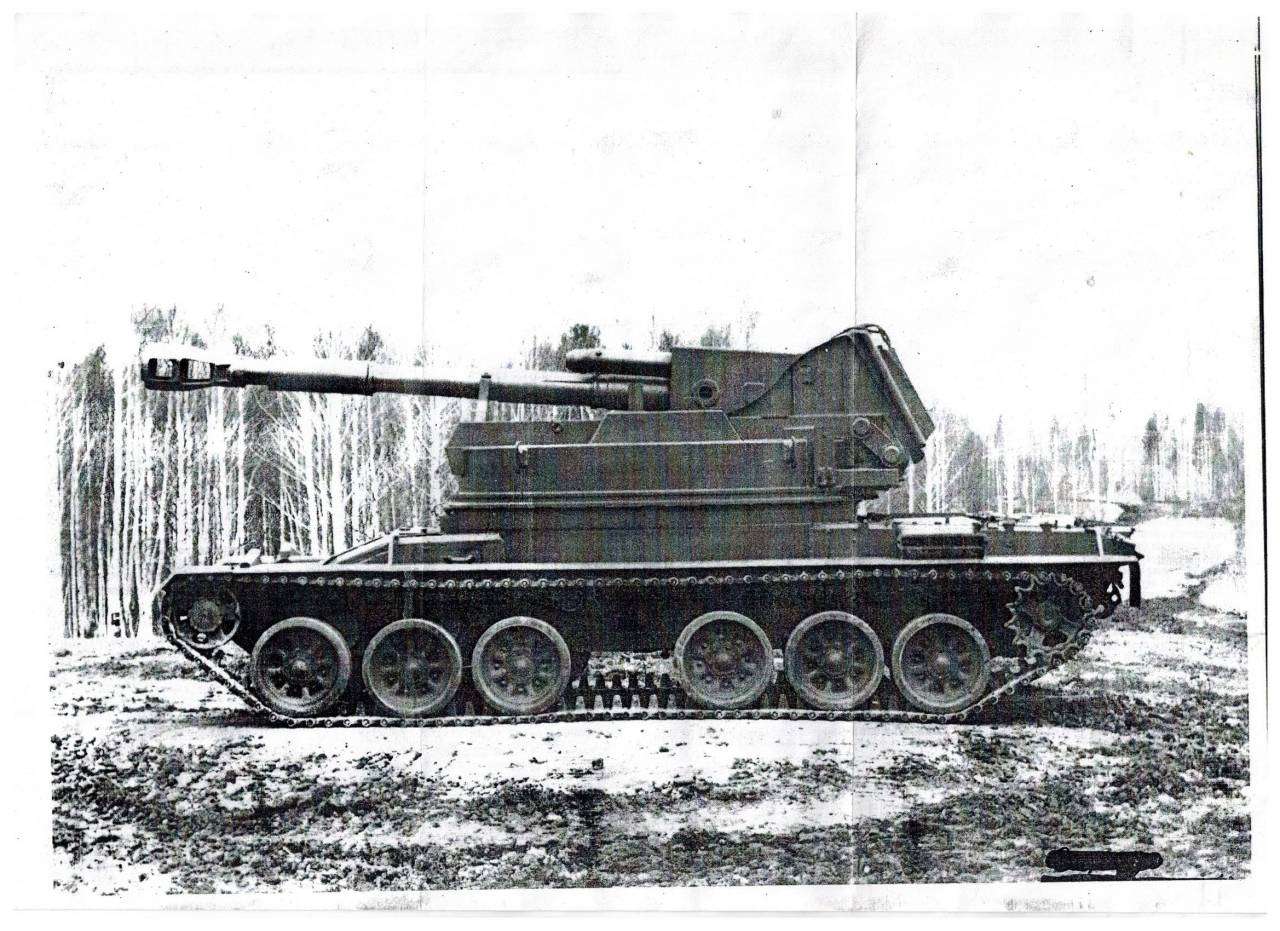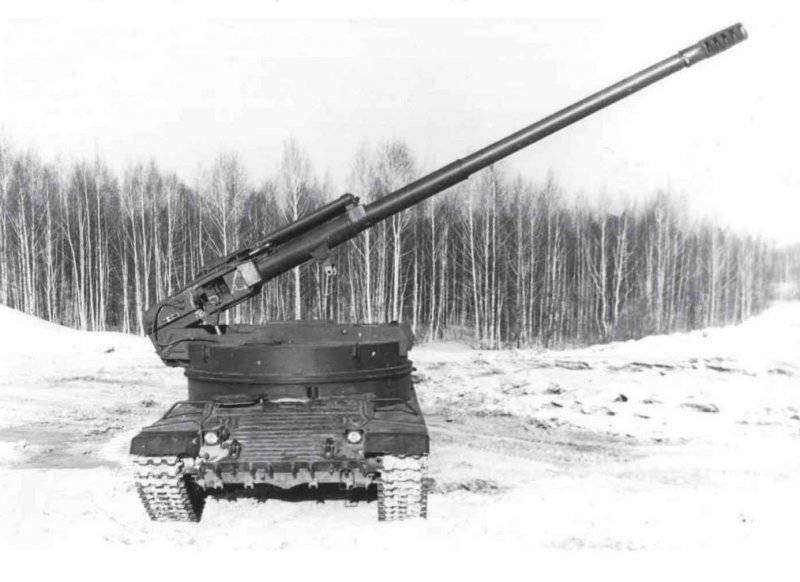
We cover many weird vehicles here, but this is one of the most visually strange designs we’ve featured; it is the Object 327. This is a self-propelled gun from the 1970s that takes an entirely different approach and places its fully-rotating 152 mm gun outside the fighting compartment.
It was thought that by putting the gun on the outside, you’d eliminate the need for a massive and heavy turret, and you didn’t need to worry about gassing the crew with the gun’s combustion gasses.
Of course the Soviets actually gave this a go, and managed to create quite an impressive vehicle with a 152 mm gun mounted on top of a low rotating cylinder.
It is often referred to as the Object 327, but the project actually started as the Object 326. For the sake of simplicity, both iterations of the vehicle will be referred to as Object 327 in this article, apart from when particular differences are discussed.

Background
At the start of the 1970s most NATO countries were using self-propelled guns (SPGs) armed with 155 mm howitzers that had maximum ranges of around 11 miles (18 km).
Over in the Soviet Union, the recently introduced the 2S3 Acacia (SPG) mostly rivalled these vehicles, with a 152 mm gun that could fire shells out to a similar range.
In the late 1960s though, Britain and West Germany had begun work on the advanced SP70 project. This new SPG had a maximum range of 15 miles (24 km) with conventional rounds, and 19 miles (30 km) with rocket assisted ammunition (RAP).

The SP70 project would actually fail to materialize, but it showed that NATO was capable of striking Soviet targets while remaining completely out of range from return fire.
The Soviet Union responded in the mid 1970s with the development of a new system that would end their range disadvantage. A few designs would appear during this period, the Object 316 and the Object 327, the focus of this article.
Both were armed with 152 mm guns, but the Object 316 was a much more conventional design, with its armament contained within an enclosed turret. This vehicle would end up going into service in the 1980s as the 2S19 Msta.
However, the Object 327 was a direct competitor during development, and is one of the strangest looking armored vehicles ever made. It took an entirely different approach to the self-propelled gun concept, by placing the gun outside the vehicle.

While this sounds crazy, there was logic behind this idea. By this point, SPG’s weapons were becoming larger, with bigger powder charges behind projectiles for greater range. It was becoming increasingly hard to properly ventilate the fighting compartment with the huge amounts of combustion gasses being produced, and the vehicles themselves had to be larger and heavier to accommodate the gun, crew and loading systems.
By putting the gun outside the fighting compartment away from the crew, ventilation was no longer an issue, and a massive, bulky turret was no longer needed. The end result, in theory, was a lighter, smaller and simpler SPG.
The Object 327
The Object 327 was designed by the company Uraltransmash, based out of Sverdlovsk (Yekaterinburg today) under the direction of lead designer N.M. Tupitsyn.
One of the requirements for new SPGs was that they were to be based on pre-existing chassis, in this case, the T-72. This radical design required changes to the the T-72’s hull, which involved chopping it in half and lengthening the entire vehicle by 650-700 mm.
This extension enabled the addition of a large ring structure projecting from the top of the hull, in place of the T-72’s standard turret ring.
The Object 327 retained the same six road wheels per side as the T-72, but they were now located in groups of three at each end of the track run, with a large gap in the middle. It is unclear exactly why this is the case. It is likely that this improved the firing stability of the platform, or there may not have been room to install the suspension’s torsion bars underneath the turret.

In place of the normal T-72 turret was the Object 327’s main event, the externally mounted gun.
The gun was mounted above a low, rotating cylinder, nicknamed the “puck”, which sat on the ring on top of the hull and could rotate 360 degrees.
Elevation was controlled by pivoting the gun up and down on top of the puck.
If the gun was mounted conventionally at the front of the turret, the breech would impact the top of the puck when elevating to high angles. Designers solved this by connecting the gun to the rear edge of the puck via a hinge near the breech.
This hinge allowed the gun to freely pivot up and down, and also meant the gun had less overhang off the vehicle.

Inside the puck was the commander, gunner and an autoloading system that automatically fed ammunition up into the gun above. The autoloader was of the carousel type, and contained 46 shells and powder charges.
It was able to load the projectile and charge at any angle of gun elevation. According to the lead designer, the externally mounted gun was extremely simple to load, and was significantly faster than other comparable autoloaders of the day.
The Object 327 was armed with the 152 mm D-22 howitzer, the same weapon used in the previous 2S3 Acacia SPG. Its breech was protected by an armored housing to keep it functioning even under fire.
Fate
The Object 327 showed great promise and fulfilled a number of its objectives; weighing less than competing designs, having a fast autoloader and reducing the associated issues with having the gun and crew in the same compartment.
But it also had some bugs and drawbacks caused by the externally mounted weapon. One of biggest unsolved issues was fixing the gun should it experience mechanical issues or become damaged in battle.
The only way to do this was by having a crew member exit the vehicle. There is also some reports of poor recoil management, but these are refuted by the vehicle’s designer, Tupitsyn.
Many sources state that two prototypes were built, each with a different gun. In reality only a single vehicle was built, but the confusion is understandable. The project initially began as the Object 326, armed with the short D-22 howitzer. The D-22 was perfectly suited to the Object 326 platform, with a fast and reliable autoloader.

Later, a request was made to mount the 152 mm 2A36 gun on the Object 326, with the vehicle’s designation being updated to Object 327. The 2A36 was much more powerful than the D-22 and not suitable for the Object 326/327 platform.
The gun’s position at the rear of the turret meant the immense recoil from the 2A36 destabilised the vehicle, with a chance of knocking it over when the turret was aiming sideways.
Tupitsyn states that the 2A36 gun was simply too much for the Object 326 platform, and changed what was once a fast firing, efficient design into one that had too much recoil and an unreliable autoloading system.
This change of weaponry and performance is often mistaken for an entirely new vehicle, and has resulted in the idea that the entire project was unsuccessful.

In the mid 1980s work on the Object 327 was stopped. Its bugs had still not been worked out, and its competitor, the 2S19 Msta, was much further ahead in development. It also benefitted from being a more familiar design with its gun inside the turret. In the end the 2S19 was selected for service.
The Object 327 prototype remained in place at a testing ground for the next 18 years, and was nearly scrapped. Fortunately the vehicle was saved, and is now on display at the Uraltransmash Museum. It is still fitted with the 2A36 gun that accelerated the project’s demise.